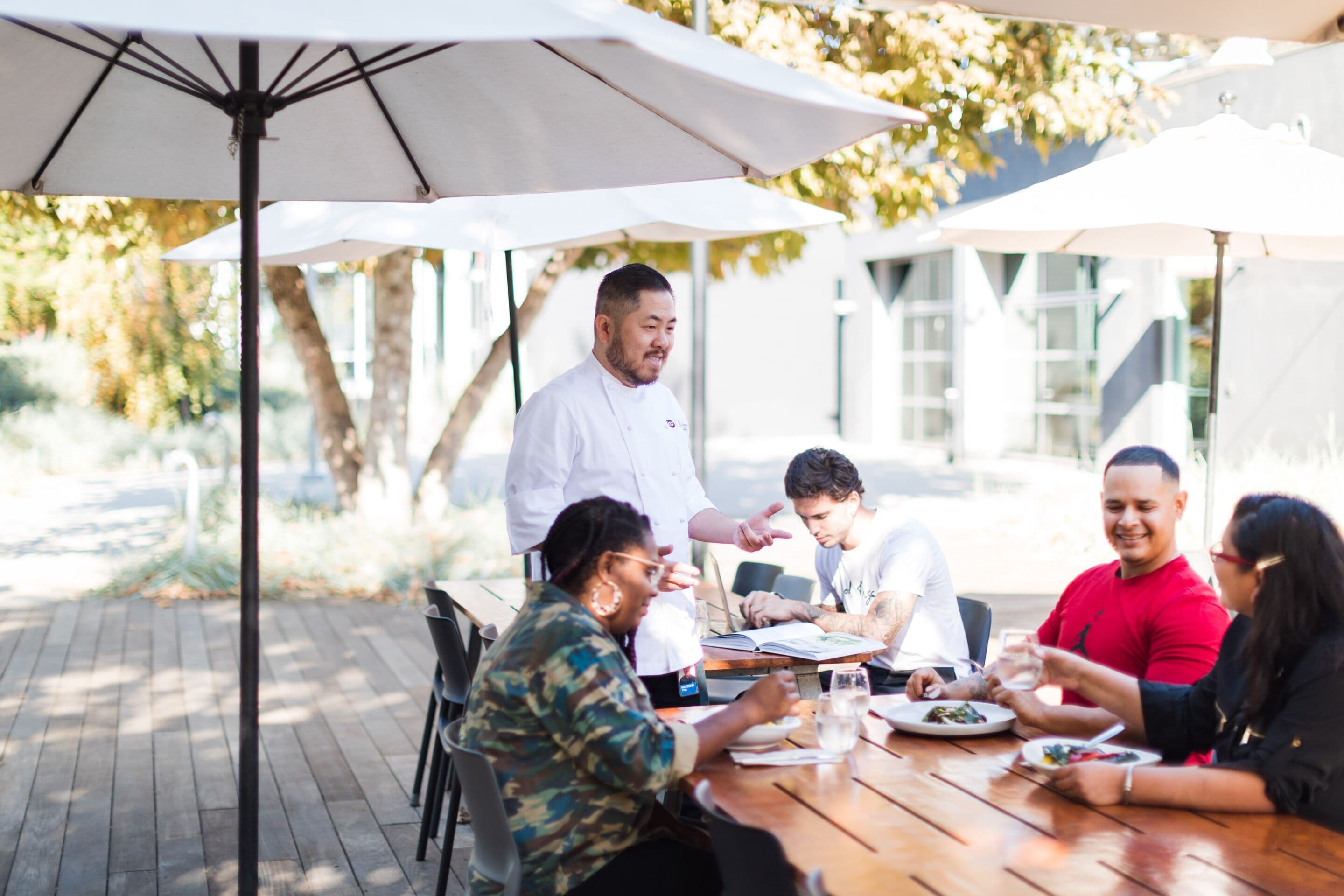The Strategic Value of Carry-in Culinary Programs
Celeste Price, Regional Vice President - West

Elevating the workplace experience with carry-in culinary programs that deliver flexibility, operational efficiency and lasting value for evolving office needs.
Workplace amenities matter more than ever, despite significant changes to occupancy brought on by the new normal of hybrid office attendance. And food is one of the most powerful, yet underleveraged, tools in your real estate strategy. A well-planned dining program doesn’t just feed employees — it can also be a differentiator that helps organizations attract talent, strengthen workplace culture and improve employee satisfaction and productivity.
As office footprints evolve and occupancy patterns fluctuate, many companies are turning to carry-in food and catering programs to meet workforce needs. But how you implement these programs matters just as much as the food itself.
This is where partnering with hospitality and culinary experts becomes a strategic advantage. A quality partner brings the knowledge to anticipate emerging trends, design flexible menus and cultivate experiences that align with your workplace culture to ensure that your dining program doesn’t just help employees function — they thrive.
A Flexible Alternative to On-site Kitchens
Driven by flexible occupancy patterns, cost controls and a desire for scalable, experience-driven amenities, some organizations are choosing to move away from full-service on-site kitchens. While traditional kitchens deliver exceptional outcomes for clients, it may not be the ideal option for everyone, as they require ongoing investments in equipment, maintenance and personnel.
When a client seeks options beyond a full-service kitchen, their corporate dining partner can still handle everything an on-site program provides: logistics, menu rotation, dietary needs, compliance and even integration with point-of-sale ordering platforms. This allows companies to offer high-quality meals without the operational challenges of running of a full kitchen, while still giving employees access to a variety of fresh and thoughtfully prepared options.
Guckenheimer offers scratch-made meals prepared off-site in licensed and inspected centralized kitchens and delivered daily as an alternative to on-site options, especially in cases where there is a need to preserve or re-purpose kitchen space for other uses. This approach can optimize real estate utilization and allows for greater consistency across multiple locations, ensuring each site receives the same level of quality.
Dining partners can tailor carry-in menus to reflect sustainability values such as low-waste packaging, plant-forward meals and local sourcing. By subscribing to a curated carry-in and catering program, organizations can meet both employee expectations and corporate ESG commitments, making food service an integral part of their sustainability strategy.
Carry-in food programs aren’t just about feeding people — they’re also about fueling performance, culture and asset value. Whether a client chooses a full-service kitchen or a carry-in program, well-curated menus and a thoughtful environment can turn meals into moments of connection, helping employees feel more engaged and appreciated at work.
When managed by the right partner, food becomes a flexible, scalable amenity that supports your company’s success and your occupants’ evolving needs. Many organizations find that commissary programs are easy to adapt as teams grow or contract, reducing operational risk while also maintaining a strong employee experience.
Data-driven Dining for a Smarter Food Experience
Like full kitchens, modern carry-in programs use real-time data and forecasting tools to align food supply with actual headcount. This data-driven approach means that organizations can minimize overproduction, plan menus around attendance trends and create dining experiences that better match worker preferences.
This ensures:
Reduced food waste
Smarter ordering and inventory management
A consistent dining experience, even with fluctuating attendance
Additionally, data insights help track popular menu items and employee feedback, allowing for continuous improvement.
On-site kitchens are not going away by any means; there will always be a need for site-based dining integral to the occupant’s workplace journey. But for some organizations, proper due diligence requires consideration of a carry-in program, especially when it’s possible to continue offering quality food experiences. The ability to deliver consistent food experiences regardless of daily occupancy should be a key consideration when debating the benefits of a commissary-based carry-in program.
Ultimately, the question is how to design a culinary program that reflects your workplace values, supports your people and adapts to the dynamic nature of modern work.


